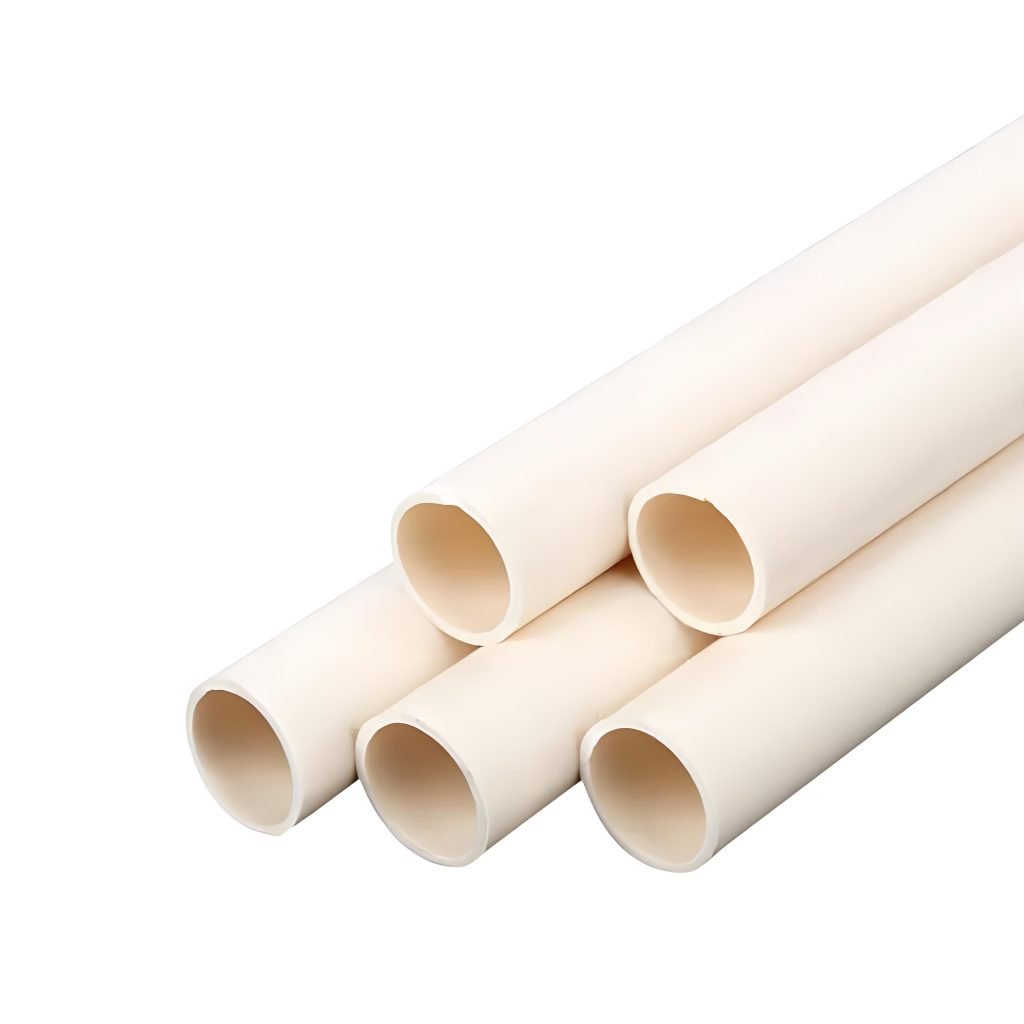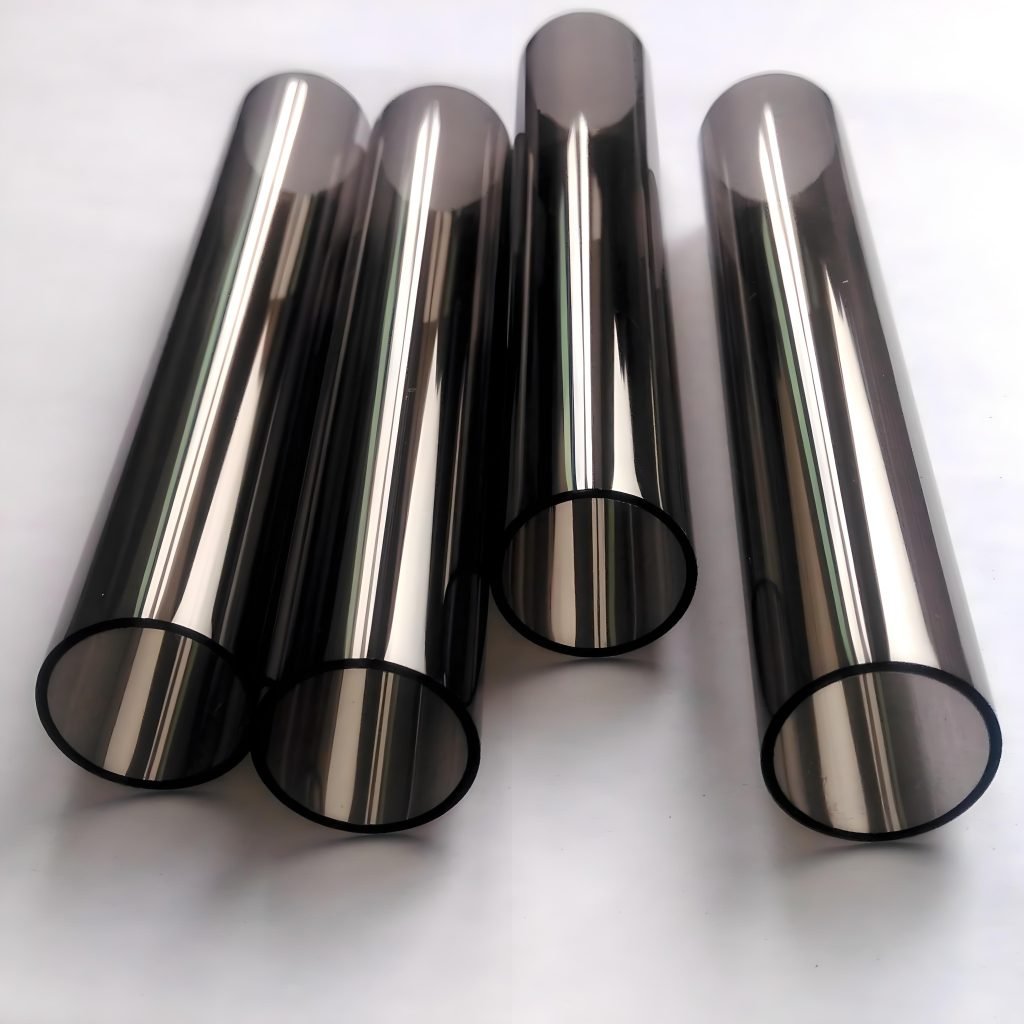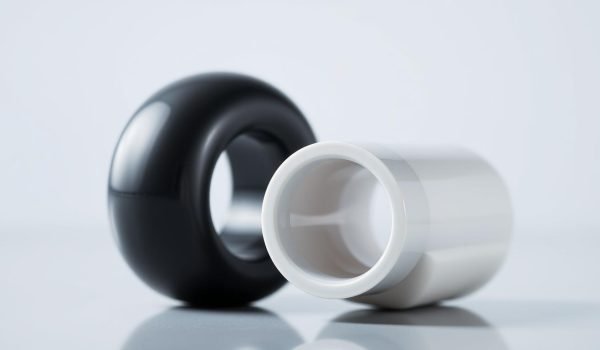Which pipe material will save you time, money, and headaches on your next plumbing project?
You’ll quickly understand what each plastic is, how they behave in home plumbing, and which choice fits your scope. This intro gives a clear side-by-side view so you can decide for drain, waste, and vent lines or for custom parts.
Expect straightforward notes on strength, flexibility, sound damping, cold performance, joining methods, code impacts, and recycling. We also flag where shipping drives cost differences and how to handle mixed-material connections when local codes allow them.
By the end, you’ll know where each material shines in the house, underground, or in cold climates, and when to order custom components from Fecision to match your specs and schedule.
ABS vs PVC at a glance: what matters for your plumbing and custom parts
Before you order parts, review the core traits that separate these two common plumbing plastics. This helps you choose the right piping for noise control, cold climates, and fast installation.
Material basics
Acrylonitrile butadiene styrene is a rigid, black thermoplastic prized for impact strength and cold performance. Polyvinyl chloride is typically white and more flexible, which helps dampen water sound inside walls and ceilings.
Color and identification on-site
You can identify materials fast: black for acrylonitrile butadiene styrene and white for polyvinyl chloride. That visual cue helps your plumbers verify pipe type before cutting and joining.
Flexibility, impact, and sound
PVC bends a bit more and muffles running water. ABS trades that quiet for greater shock resistance and stiffness, valuable for underground or exposed runs in very cold weather.
Temperature, sunlight, and installation
ABS tolerates severe cold but can warp in direct sunlight. PVC resists UV damage better in many outdoor uses. For joints, ABS uses a one-step special cement; PVC requires primer then cement, which adds time and cleanup.
Building codes and transitions
Local building codes across the United States vary. Where mixing is allowed, do not glue the two different materials together. Use a rated plastic-to-plastic coupling with a rubber sleeve and metal jacket to join pipe ends reliably.
What is PVC material? Properties and best uses for PVC plastic
Polyvinyl chloride is a widely used thermoplastic that handles indoor plumbing and electrical insulation with ease. You’ll find it in common pvc pipes for building drain, waste, and vent systems where quiet performance matters.
The material offers modest flexibility and dampens the sound of running water better than many harder piping choices. It also resists chemicals and water degradation, which makes it reliable in residential wastewater and light commercial applications.
For most plumbing projects, schedule 40 pipe is the go-to type for interior DWV runs. It’s affordable, compatible with standard fittings, and accepted by most inspections in the United States.
Joining is a two-step process: apply purple primer, let it flash, then brush on solvent cement for a durable bond. That process yields long-lasting connections you can inspect and trust on your next home project.

What is ABS plastic? Properties and best uses for ABS plastic
When rugged, cold-ready piping matters, pick a material that holds up under load and frost. Acrylonitrile butadiene styrene is a rigid thermoplastic known for higher impact strength and stiffness. It’s usually black and stands up to handling and backfill loads better than many alternatives.
Definition and BPA note
Acrylonitrile butadiene styrene (often shortened to acrylonitrile butadiene) may contain BPA. Regulators say current exposure levels are considered safe for humans, but animal studies show areas of concern. Use your risk tolerance and local codes to guide material choice.
Key properties and typical uses
This material resists shock and stays tough in extreme cold, so it’s common for underground runs, sewer drainage, and some electrical insulation applications. Its rigidity makes it good for custom parts that must hold shape under load.
Outdoor and joining considerations
Avoid prolonged exposure to direct sunlight to prevent warping. For faster installs, bonding uses a one-step special cement—no purple primer stage—so the process is quicker than with some other piping. Always follow the manufacturer’s prep and curing steps for reliable joints.

Main differences between ABS and PVC plastic
A clear view of the main differences helps you pick the best material for your project. This section compares performance, installation, rules, and real-world costs so you can decide quickly.
Performance trade-offs: flexibility vs. impact; sound vs. strength
PVC is more flexible and better at muffling water noise inside walls. That makes it a common choice for above-grade plumbing where quiet matters.
The other material is stiffer and gives higher impact resistance and cold-weather toughness. That strength helps when pipes face heavy handling or underground loads.
Installation time and labor: one-step vs. two-step bonding
One material bonds with a single cement step, which saves time on fast projects. The other needs primer plus cement, adding labor and cure time and increasing total installation time.
Compliance and local building codes
Local building codes can limit your options. Some jurisdictions specify which types are allowed for certain applications, so verify approvals before you order materials.
Cost, availability, and shipping considerations in U.S. markets
Material prices are usually similar. When costs diverge, regional shipping and stock explain most differences. Plan purchases to match local availability and inspection schedules.
When to use PVC or ABS: key factors to consider and responsible recycling
Deciding between these common piping options comes down to where the lines run and how they’ll be used.
Environment and application
Use pvc pipes indoors for DWV runs where you want quieter water flow in walls and ceilings.
Reserve abs pipes for underground runs or cold climates where impact resistance and low-temperature toughness matter.
Noise, impact, and temperature
Prioritize noise control for living spaces. Where shocks or freezing are likely, choose the tougher option to reduce repair risk.
Codes and connections
Do not mix glues between materials; many building codes forbid solvent joints across types. When transitions are allowed, join with a plastic-to-plastic coupling that uses a rubber sleeve and metal jacket clamped over the pipe ends.
Recycling and reroute options
Contact local recycling or construction-and-demolition facilities for accepted plastic pipes. Avoid open burning and keep scraps out of storm runoff.
If an under-slab run is inaccessible, consider rerouting outside the slab to save time and limit demolition before reconnecting outside the building envelope.
Need custom parts?
If you need tailored elbows, manifolds, or housings, Fecision can produce custom plastic parts in either material to meet codes, schedule, and your installation needs.
Conclusion
Your best plumbing outcome comes from choosing the right plastic for performance and code compliance. Compare abs pvc by matching flexibility, impact strength, noise control, and joining method to the site conditions before you buy.
Remember that butadiene styrene chemistry gives the black material higher impact resistance and cold toughness, while acrylonitrile butadiene composition helps it hold shape under load. White pvc bends more, quiets running water, and needs primer plus cement for durable joints.
Follow local codes for allowed uses and transitions. Recycle cutoffs through accepted programs, avoid open burning, and consider rerouting to reduce slab demolition when possible.
If standard parts won’t fit your plan, Fecision can produce custom plastic components in the materials you specify so your piping installs cleanly and performs as designed.




